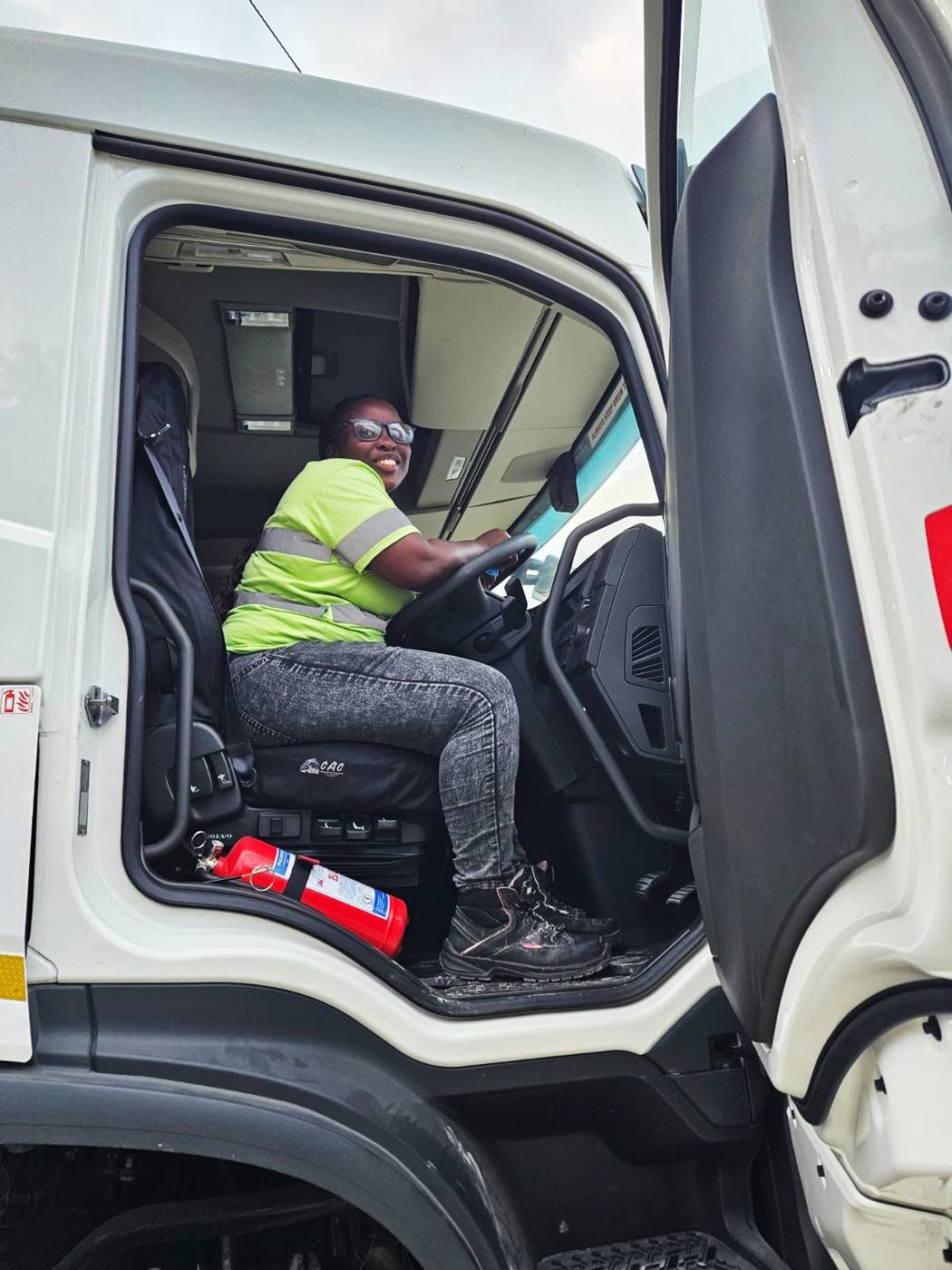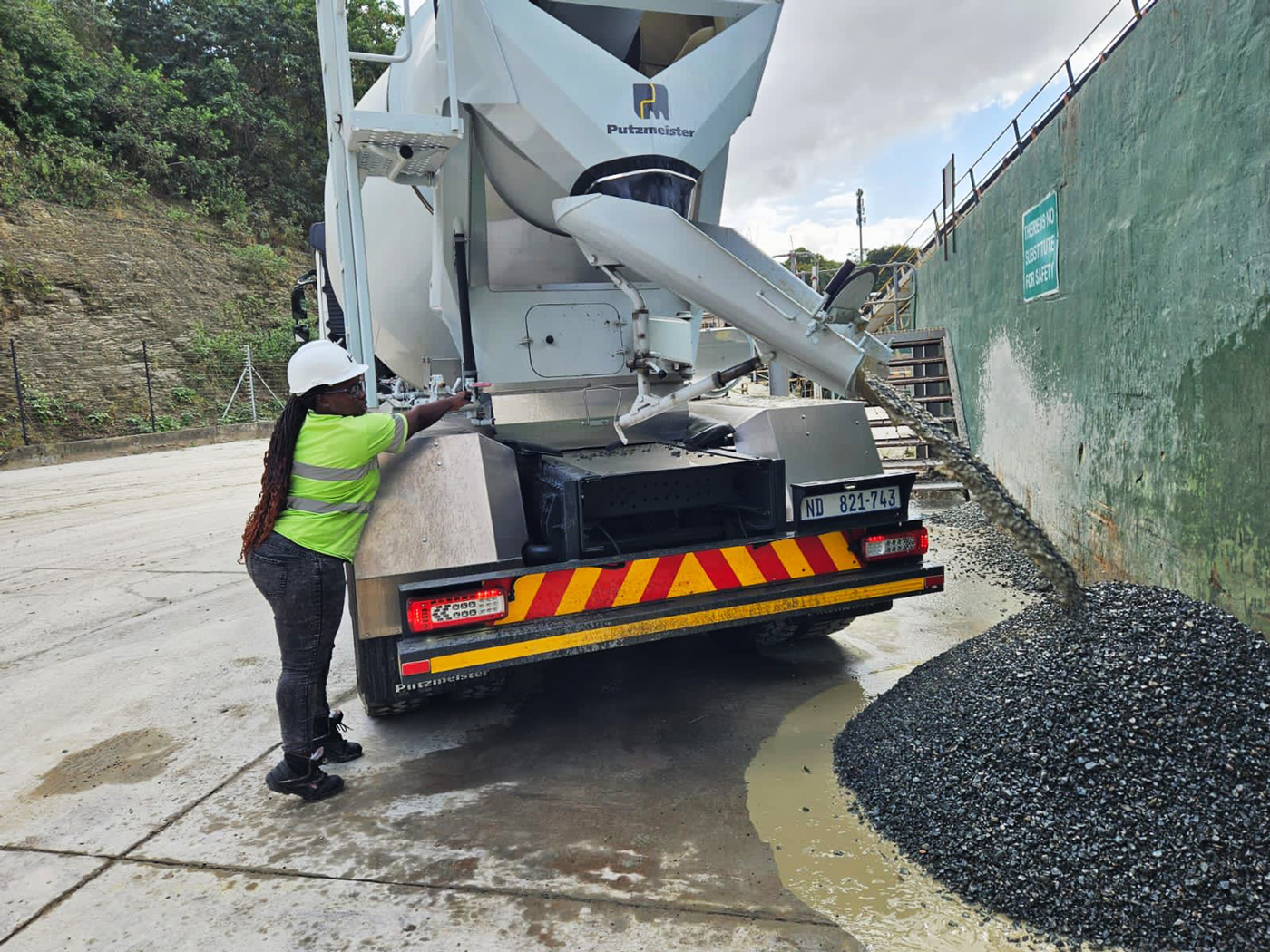It’s time to shift gears and employ more women drivers!
It’s time to shift gears and employ more women drivers!
The very act of chivalry, a historical form of courtesy extended primarily to women, now stands as a potential roadblock to the progression of women in industries such as the transport sector. NICCI SCOTT-ANDERSON is intrigued by this notion.
The imagery often associated with trucking – rugged roads, the vast horizon, and the solitary driver – is so intrinsically masculine that one might overlook the reality that women have been behind the wheel for over a century, navigating those same roads and facing those same challenges.
During Women’s Month, it’s pertinent to delve into a question that’s been hanging in the rearview mirror of the transport industry for far too long: why is it so hard to let go of chivalry and allow women to flourish as professional commercial drivers?
Unpacking this is no simple feat. Research suggests that entrenched stereotypes, societal norms, and traditional expectations cast long shadows on our perceptions of gender roles. Nowhere is this more pronounced than in historically male-dominated sectors, like transport. All too often the conversation about empowering women to take on the role of a truck driver is followed by the comment, “Call me old fashioned, but I don’t believe…”

The Commercial Transport Academy (CTA) is at the forefront of change, driving the largest female commercial driver programme in Africa. While its leadership proudly underscores its strides made in enhancing gender diversity, the academy candidly acknowledges the very real barriers it encounters.
Kas Govender, CTA compliance and HR director, observes that despite the global trend towards gender inclusivity in trucking, South Africa remains somewhat in the slow lane. “There still appears to be a very clear divide, with organisations either being pro or against employing women drivers,” she notes.
Govender points to persistent barriers dominating boardroom discussions that include anything and everything from the perceived on-the-job risks women might face and infrastructural challenges on long hauls to resistance from existing male drivers and the persistent violence targeting the trucking industry.
While these challenges are undeniably real, CTA advocates a balanced view acknowledging that certain sectors within transport are well-suited for female drivers. This presents opportunities for organisations to introduce women, even while broader industry challenges remain.
Companies like Trucklogix Onelogix are emblematic of this change. It has integrated female drivers seamlessly into its operations. Managing director Quinton Roos highlights the unique value brought by women, noting that those who transition from driving to operational roles offer invaluable insights, particularly in addressing challenges specific to female drivers. “Initially there was resistance. However, this soon faded as the male drivers saw the competencies displayed by the female drivers,” he reveals.
Petit Forestier echoes this sentiment. After initiating its journey by appointing the company’s first female driver in Johannesburg in 2022, it has since expanded to include women drivers in Cape Town and Durban. William Racinne, the country director, underscores the multifaceted roles these women play, including driving, assisting in workshop mechanics, and the role of technician. He highlights the multifarious strengths women bring, noting their proficiency in multitasking, managing stress, and navigating diverse workplace dynamics. “Having women drivers has really helped Petit Forestier in the day-to-day business, not just with the driving duties but also in developing a great team spirit,” says Racinne.
Turning to women drivers operating in some of the more volatile provinces in South Africa, we chatted to Gugu Msomi, a CTA programme graduate who now expertly manoeuvres and operates an 8×4 twin-steer Readymix truck. She has been on quite a journey! As recently as 2022, she was a totally inexperienced truck driver, but qualified as a Code EC driver. Today, she confidently and precisely operates her vehicle in the challenging road conditions and construction sites along the north coast of KwaZulu-Natal.
For Msomi, support from her male colleagues proved instrumental in understanding the nuances of her role. This a testament to the importance of collaborative efforts in the workplace. Msomi gleefully recalls her first trip to a very large road-side construction site: “I think I drove at perhaps 40 or 50km/h. I was so scared! But, when I got to the site, my male colleagues approached me and said: ‘Girl, you have to drive faster. The cement will set in the drum if you travel at that speed.’”

Her smile is contagious, as is her laughter. Msomi notes that she is generally the only woman driver on most sites – and she’s had to step up and embrace the physicality of the job. “I proudly hang off the side of my truck, inspecting the consistency of the slurry or chipping away hardened cement. I am proud to be a role model for my employer, other women, and young girls in my community,” says Msomi, with one of her typically big smiles.
Fezeka Nyaka, a seasoned driver who is remunerated per load, speaks about having to learn patience to be an effective driver. She says that sometimes the operational inefficiencies are so glaringly obvious to her that she feels the need to speak up – but believes that operators don’t want to hear the opinions of drivers.
Nyaka talks about having to drive for other people on the road. “On a daily basis, I hear the words of my mentor, Jeff Pletzen, and I strive to drive as if the people that are in front, alongside, and behind me are unconscious. I do this because they are unaware of how a truck operates. It’s up to truck drivers to keep them safe,” she explains.
Like Msomi, Nyaka says that down the road she wants to own her own business and operate a safe fleet. “But for now I’m taking in every opportunity to learn and understand the different industries within the transport sector,” she adds.
I find it gratifying to see women like Msomi and Nyaka stepping up to the plate. These two women do as good a job as any of their male counterparts, and I salute them, but more is needed! As the transport sector continues its journey towards greater inclusivity, it’s imperative to champion the successes of proactive organisations and women drivers, while acknowledging the work that remains. The World Bank has consistently repeated the sentiment that keeping women out of the workforce has an impact on entire economies, leaving countries with smaller talent pools and fewer workers to fuel economic growth. Roos agrees, asserting: “Transport operators need to commit to the employment and empowerment of women drivers and implement the correct operational procedures and policies to accommodate them from the outset.”
The very essence of Women’s Month is to celebrate the achievements and acknowledge the challenges women face. As we delve deeper into the tales of women truckers, one can’t help but wonder: are we, as a society, still allowing the courteous veil of chivalry to blind us to the potential and capabilities of women? Furthermore, is this a mindset that hinders progression?
Published by
Nicci Scott-Anderson
focusmagsa




